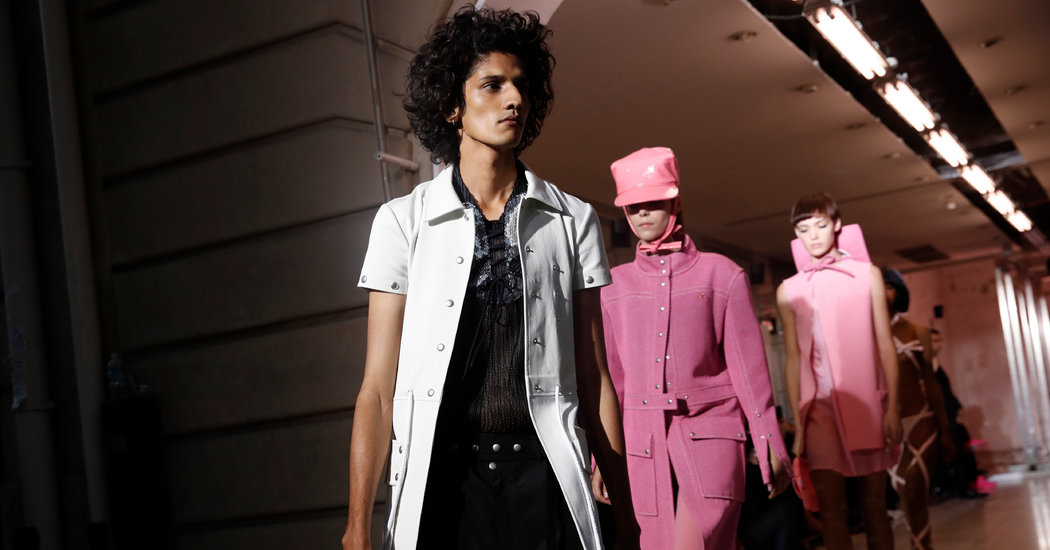
You build on the rubble of the past. That’s the way it goes. But at Courrèges, it was unusually literal.
The first showing for the latest reinvention of the storied label, whose past looms large over all of fashion, took place at its historic Paris shop, whose emptiness seemed slightly creepy, all concrete and glass. It looked practically bombed out.
In fact, it more or less had been. The shop had been a casualty of World Cup hooliganism, in the heady aftermath of France’s victory this summer, its stock burgled, its window smashed. Plans had been in place to start afresh anyway: Suddenly there was cause.
It was up to the new Courrèges artistic director, Yolanda Zobel, to build it back up, and she installed an interdisciplinary architecture studio, Diplomates, in the space for a four-day “intervention” before her show, the starting point for its continuing renovation.
It’s the right time. Courrèges has a new owner, Artemis (the Pinault family holding company that also owns Kering), which completed its acquisition of Courrèges in September, and despite the long shadow its space age founder casts, it is still a label in search of its current identity.
Its previous stewards, Sébastien Meyer and Arnaud Vaillant, found success with jazzed-up versions of its founder’s vinyl jackets and miniskirts but struggled to translate that into a fully rounded vision. Ms. Zobel seems more concerned with mining the Courrèges legacy for bits but shredding the rest. Courrèges is all plastic-fantastic, but in 2018 sustainability colors the conversation. So Ms. Zobel took it up as her cause.
“Courrèges’ textured vinyl remains our most iconic material,” she wrote in a statement announcing “La Fin du Plastique,” both a rallying cry and, as befits the moment, an accompanying pop-up shop and capsule collection. “When it debuted in the 1960s it represented a liberating and democratic future. Today the world is drowning in plastic — and our future depends on its obsolescence. So how do we honor a master of the plastic arts in a post-plastic environment?”
Her answer is a commitment to developing an alternative and, in the meantime, ending the use of vinyl as the label has known it. She used shiny bits of the stuff to decorate jackets but stopped short of going full tilt.
Courrèges’s current back stock tots up to 6,000 meters; as a going-out-of-vinyl-business sale, the remaining pieces using it will be numbered and descend, as Ms. Zobel put it, “down to the last centimeter of vinyl, making this a limited-edition line in the deepest sense.”
Do-gooding can, unfortunately, be a drag. But Ms. Zobel’s Courrèges began with the feel of a party. Ms. Zobel, an alumna of Acne Studios and, farther back, Jil Sander, has lately been living in Berlin, where she still keeps her apartment, and some of the city’s wild energy suffuses her work (and some of its residents and fans, like Serhat Isik of GMBH and Telfar Clemens of the New York label Telfar, came to see it and whoop along).
Her new collection had a rough-and-ready utility, all snaps and flak jackets, mixed with a flower-power modishness that kept some of the old spirit alive. There were daisies and bows but here as stocking-prints and pasties — recycling with an edge. It’s a less polite interpretation than the last one, but oftentimes, the best parties are.
And they, too, are usually held in a wreck.







